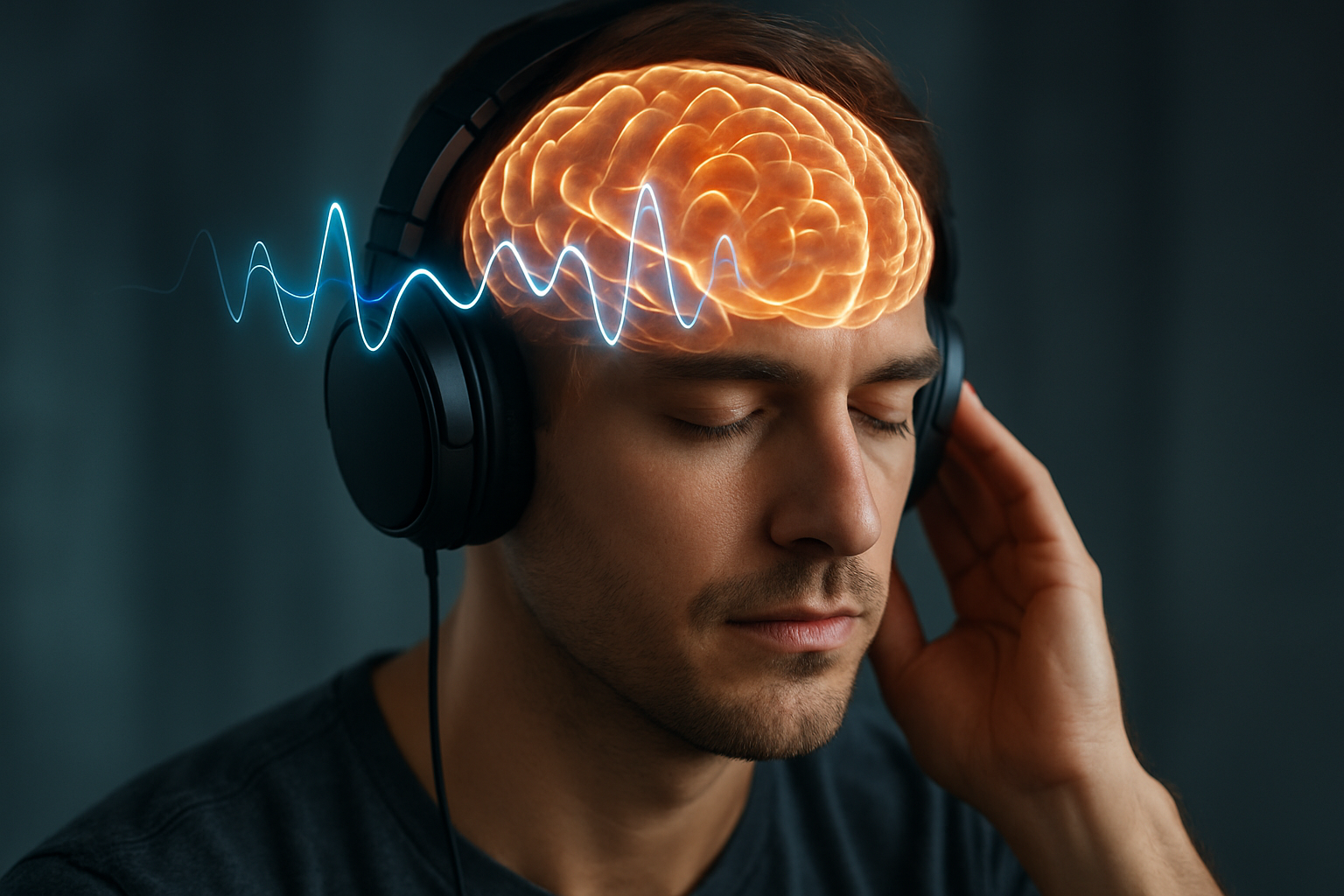Binaural Beats: Tuning Your Brain for Peak Performance
Introduction: Have you ever wondered if sound could be the key to unlocking your brain's full potential? Imagine a world where specific audio frequencies could enhance focus, reduce stress, and even improve sleep quality. Welcome to the fascinating realm of binaural beats, where science meets sound to revolutionize cognitive enhancement.

This phenomenon was first discovered in 1839 by Heinrich Wilhelm Dove, a Prussian physicist and meteorologist. However, it wasn’t until the late 20th century that researchers began to explore the potential cognitive effects of binaural beats. The key to their effectiveness lies in a process called brainwave entrainment, where the brain’s electrical activity synchronizes with external stimuli.
Brainwave Frequencies and Their Effects
Our brains operate at different frequencies depending on our state of consciousness. These frequencies are measured in Hertz (Hz) and are categorized into five main types of brainwaves:
Delta waves (0.5-4 Hz): Associated with deep sleep and healing
Theta waves (4-8 Hz): Linked to deep relaxation, meditation, and creativity
Alpha waves (8-13 Hz): Present during relaxed alertness and light meditation
Beta waves (13-30 Hz): Dominant during normal waking consciousness and active thinking
Gamma waves (30-100 Hz): Connected to higher cognitive functions and peak concentration
Binaural beats are designed to induce specific brainwave states by presenting a beat frequency that matches the desired brainwave range. For instance, a binaural beat with a frequency of 6 Hz aims to promote theta waves, potentially enhancing creativity and relaxation.
Potential Benefits of Binaural Beats
Research into the effects of binaural beats has yielded promising results across various cognitive domains. While more studies are needed to fully understand their impact, several potential benefits have been identified:
Enhanced Focus and Concentration: Beta frequency binaural beats may improve attention and task performance. A 2017 study published in the journal Psychological Research found that beta-frequency binaural beats were associated with improved attentional control.
Stress Reduction: Alpha and theta frequency beats have been linked to decreased anxiety and improved relaxation. A 2019 study in the journal Frontiers in Human Neuroscience reported reduced pre-operative anxiety in patients exposed to binaural beats.
Improved Sleep Quality: Delta frequency binaural beats may promote deeper, more restorative sleep. Research published in Frontiers in Human Neuroscience in 2018 suggested that delta-frequency binaural beats could enhance slow-wave sleep, crucial for memory consolidation and cognitive performance.
Increased Creativity: Theta frequency beats might boost creative thinking and problem-solving abilities. A study in the journal Psychomusicology found that participants exposed to theta binaural beats showed improved divergent thinking, a key component of creativity.
Pain Management: Some studies have explored the use of binaural beats for pain relief. A 2018 study in the Journal of Alternative and Complementary Medicine reported reduced acute pain perception in participants listening to theta and alpha frequency binaural beats.
How to Use Binaural Beats Effectively
To experience the potential benefits of binaural beats, consider the following guidelines:
Choose the right frequency: Select binaural beats that match your desired cognitive state. For example, use beta frequencies for focus, alpha for relaxation, or delta for sleep.
Use stereo headphones: Binaural beats require separate tones in each ear, so headphones are essential for the effect to work.
Find a quiet environment: Minimize external distractions to fully immerse yourself in the audio experience.
Set realistic expectations: While many users report positive effects, individual responses may vary. Be patient and consistent in your practice.
Combine with other techniques: Integrate binaural beats with meditation, deep breathing, or visualization exercises for enhanced results.
Be mindful of volume: Keep the audio at a comfortable level to avoid hearing damage.
Limitations and Considerations
While binaural beats show promise, it’s important to approach them with a balanced perspective:
Individual variability: Not everyone responds to binaural beats in the same way. Factors like personal physiology and existing brainwave patterns can influence effectiveness.
Limited long-term studies: More research is needed to fully understand the long-term effects and optimal usage patterns of binaural beats.
Potential side effects: Some users report headaches or dizziness. If you experience any discomfort, discontinue use and consult a healthcare professional.
Not a substitute for medical treatment: Binaural beats should not replace professional medical advice or treatment for serious conditions like clinical anxiety or sleep disorders.
Tuning In: Quick Facts About Binaural Beats
• Binaural beats are most effective in the frequency range of 1-30 Hz.
• The auditory cortex in the brain is responsible for processing binaural beats.
• Some researchers believe binaural beats may influence neurotransmitter production.
• Binaural beats can be embedded in various types of music or nature sounds.
• The U.S. military has explored using binaural beats to improve soldiers’ focus and reduce fatigue.
As we continue to explore the frontiers of cognitive enhancement, binaural beats offer an intriguing and accessible tool for potentially optimizing brain function. While not a magic solution, they represent an exciting intersection of neuroscience and technology. As research progresses, we may uncover even more ways to harness the power of sound for mental and emotional well-being. Whether seeking improved focus, deeper relaxation, or enhanced creativity, binaural beats provide a unique avenue for those looking to fine-tune their cognitive performance in our increasingly demanding world.




